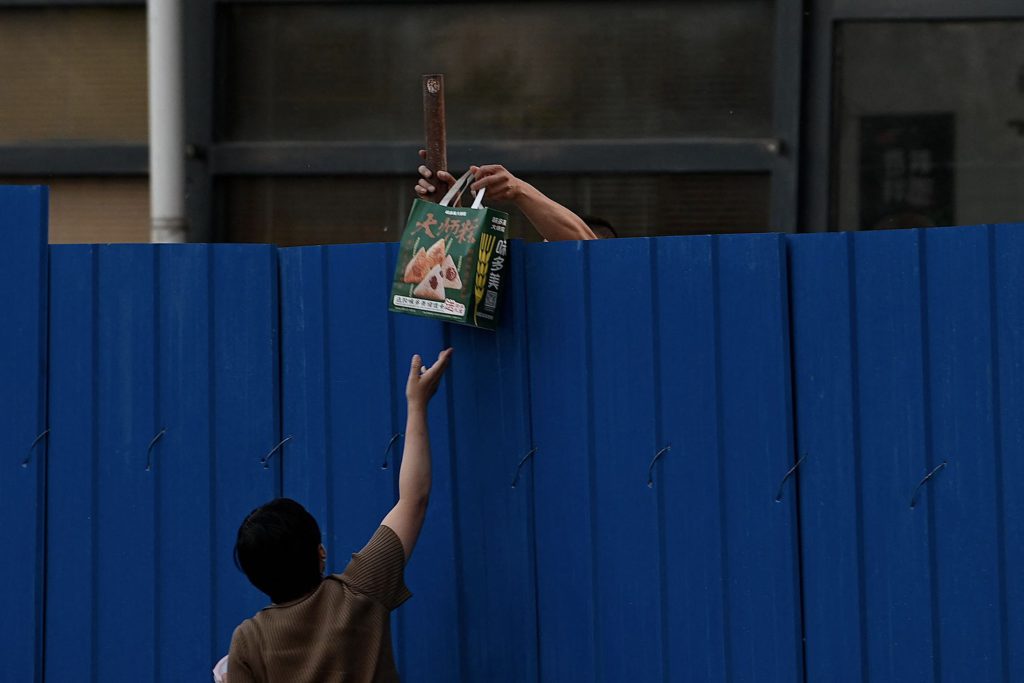(Bloomberg) — Fresh outbreaks around key Chinese cities and the ongoing Covid-19 spread in Beijing are raising the specter of more disruptive pandemic curbs, even as Shanghai slowly emerges from its six-week lockdown.
The capital reported 69 new cases for Tuesday, up from 52 on Monday. The Fengtai district has locked down some areas for seven days after new clusters flared, with authorities racing to isolate people exposed at a fresh produce market to try and prevent community spread. Three rounds of mass testing across four districts, including Fengtai, will start Thursday.
Tianjin, close to the capital and where an outbreak in January disrupted global automakers Toyota Motor Corp. and Volkswagen AG, saw cases rise to 55 on Tuesday from 28 on Monday. The port city in China’s north has closed 36 subway stations, and commuters heading to Beijing are required to get a negative Covid test within 48 hours of travel.
A cluster is also ballooning in Sichuan province, which reported 201 cases, raising concerns about potential spread to Chongqing, an important manufacturing hub and home to about 32 million residents. Nationwide, the case count rose for the first time in five days.
The flareups underscore the challenges China faces in pursing Covid Zero, as well as the ever-present risk of disruptions that have already taken an enormous economic and social toll. The zero-tolerance approach is straining in the face of the highly transmissible omicron variant, with authorities turning to deploying harsh measures more extensively and frequently, including the unprecedented shutdown of Shanghai.
Read more: Thousands Shown Being Herded Into Covid Quarantine in China
The financial hub, the epicenter of China’s worst outbreak since the early days of the pandemic, is finally starting to emerge from its grueling lockdown. While cases rose slightly to 855 on Tuesday from 823 on Monday, no infections were found outside of government quarantine for a fourth day. A day earlier, the city hit the crucial milestone of three consecutive days of zero cases in the community, the metric authorities had said would allow them to unwind the strict curbs that hampered economic activity and curtailed almost every aspect of daily life for residents.
However, many restrictions remain in place and swaths of the city’s population are still largely stuck inside their compounds. Residents must produce a pass to exit their compounds and can only leave by bike or on foot. The passes are distributed to each apartment by residential committees, allowing one person per family to leave during appointed hours for grocery errands. According to passes seen by Bloomberg News, many compounds will allow residents to leave twice in the next four days, for a maximum of four hours at a time.
Read more: My First Day Out of Shanghai’s Lockdown Was Far From Freedom
About 790,000 people in quarantined areas of Shanghai are still under the toughest restrictions that bans them from leaving their apartments due to Covid cases, Zhao Dandan, deputy head of the city’s health commission, said at a press conference Wednesday.
There are also few signs of any widespread re-opening for businesses. Many firms in Shanghai are still enforcing the closed-loop systems, where staff work and live on-site and undergo regular testing, that allowed them to operate during the lockdown.
The largest chipmakers in Shanghai, including Semiconductor Manufacturing International Corp., still have thousands of workers in Covid-free bubbles for production. Non-essential staff are advised not to go back until further notice, according to people familiar with the matter, who asked not to be identified because the work practices are confidential.
SMIC’s plant in Zhangjiang has about 5,000 workers in closed loop, said one of the people.
Unisoc, the country’s largest mobile chip manufacturer, didn’t comment on closed-loop policy, but said in a text statement that the company is working in accordance of local authority’s rules to resume production.
(Updates to add details on Beijing, Tianjin in second and third paragraphs.)
More stories like this are available on bloomberg.com
©2022 Bloomberg L.P.











